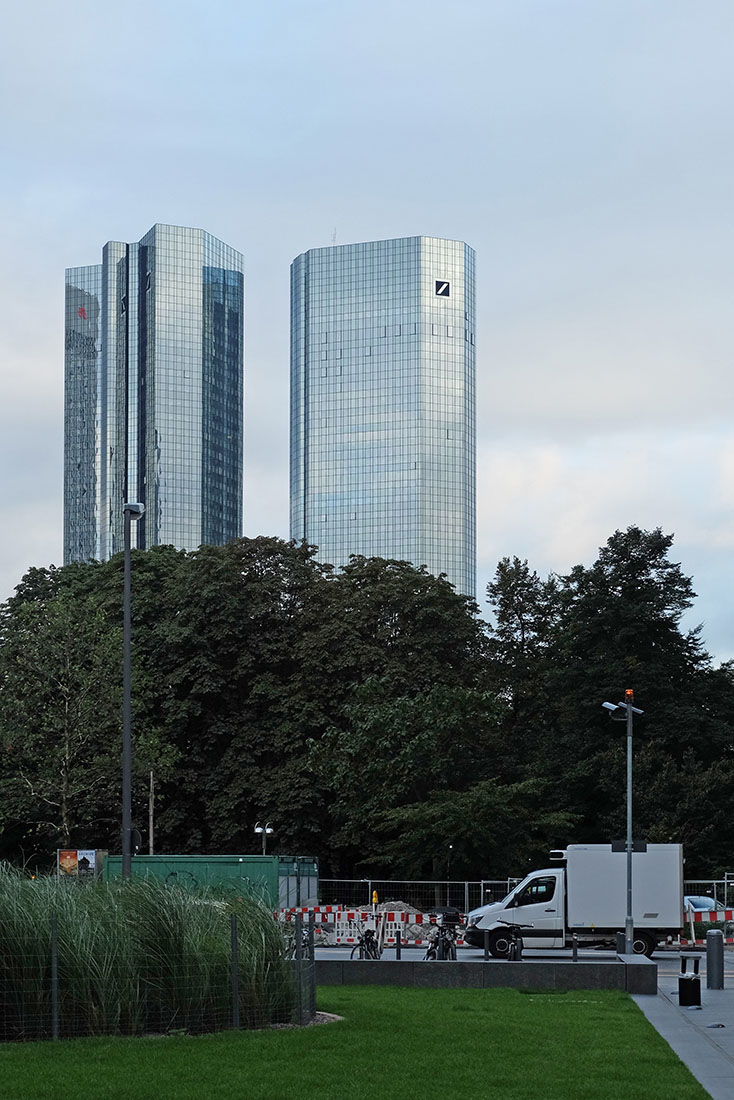 |
 |
 |
 |


Greentowers
Taunusanlage 12, Frankfurt
1978 - 1984
The prism-shaped twin towers, designed by ABB Architekten, were known as German Bank Towers prior to their conversion,
since then they are regarded as environmentally most friendly skyscrapers in the world.
Popularly the two buildings were called "debit and credit". The building complex consists of three parts, a four-storey base and the twin towers. The two towers have 38,
respectively 40 floors and reach a maximum height of 155 meters. The two towers have irregular floor plans, however it is the same in both cases, which shows with many 45 ° angles.
The towers are located in a distance of 13 m to each other, arranged point-symmetrically in relation to the central facilities. Because of their presence in the media, the two towers belong
to the best known modern buildings in Germany.
The high-rise complex was built in the late seventies, employing the then new "Tube-to-tube" method. The double wall construction of massive concrete with small window openings,
which is surrounded by the second exterior shell made of mirrored glass, should ensure an improvement in the energy balance. The Greentowers have a turbulent history.
After recession and surplus office space, the project seemed increasingly unprofitable. The pit was already excavated on the parcel on which at the beginning of the 1970s
still existed the ruins of the neo-baroque Lowenstein Palais, destroyed during World War II. As a consequence of the aforementioned economic troubles, the pit had been
filled in again. When in 1977, the Hyatt hotel chain showed interest in this development, the plans of the complex were redesigned for a hotel usage. However, Hyatt jumped off
again and the German Bank took over in 1979, when construction had already started and only little changes were still possible. For example the division in two separate towers,
connected only by the four-storey base, could not be changed. For a long time the bank palace, which was finished in 1984, was not accessible for the general public. Just with
the restoration from 2007 to 2011 by the architectural firm gmp, he urban environment should be more involved. The foyer, with a sculpture by Karl Arnold, was opened
for the general public. As a reminder of the former palace which was removed for the construction of the high-rise complex, a side entrance is flanked by two historic
lion reliefs from the gable of the old palace building.